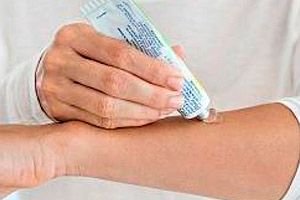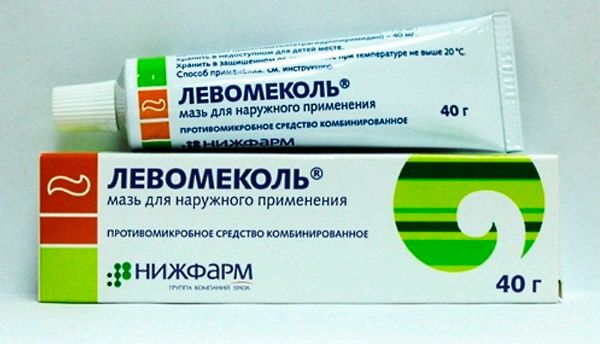
All iLive content is medically reviewed or fact checked to ensure as much factual accuracy as possible.
We have strict sourcing guidelines and only link to reputable media sites, academic research institutions and, whenever possible, medically peer reviewed studies. Note that the numbers in parentheses ([1], [2], etc.) are clickable links to these studies.
If you feel that any of our content is inaccurate, out-of-date, or otherwise questionable, please select it and press Ctrl + Enter.
Levomekol for burns
Medical expert of the article
Last reviewed: 03.07.2025

Ask any doctor whether Levomekol ointment can be used for burns, and you will receive a clearly positive answer.
 [ 1 ]
[ 1 ]
ATC classification
Pharmacological group
Pharmachologic effect
Indications levomekol for burns
This effective combination remedy is widely used in surgical practice, burn units and dermatology. Its indications include treatment of not only first and second degree burns, but also freshly infected and festering wounds, frostbite, inflammatory diseases of the skin and subcutaneous tissue (boils, carbuncles), trophic ulcers and severe bedsores.
Pharmacodynamics
The pharmacodynamics of Levomekol ointment is based on a combination of the mechanism of action of the bacteriostatic antibiotic chloramphenicol (chloramphenicol) and the non-steroidal anabolic methyluracil (2,4-dihydroxy-6-methylpyrimidine) included in its composition.
Active against many strains of microbes, levomycetin (in 1 g of ointment its content is 0.0075 g), by binding to bacterial ribosomes, suppresses the process of formation of nucleic acids in their cells and disrupts their transfer to ribosomes. That is, protein synthesis is inhibited, which leads to the cessation of bacterial growth and their aggression on damaged and inflamed areas of the skin.
Methyluracil (0.04 g in 1 g of ointment) makes Levomekol a regenerating agent for burns, since this substance:
- enhances metabolic processes and trophism in tissues,
- promotes the formation of new cellular structures to replace those damaged or subject to necrosis (by stimulating the proliferation of epidermal cells in the area of damage),
- stimulates healing by activating cellular and molecular immune factors (T-lymphocytes, T-helpers, phagocytes, gamma interferon).
In addition, methyluracil reduces the intensity of inflammation in burns by reducing the action of enzymes that catalyze proteolysis (intracellular breakdown of proteins).
The use of Levomekol ointment for burns gives a positive therapeutic effect also because the basis of this product is not fatty, but polyethylene glycol (hydrophilic polyethylene oxides). Firstly, this allows the active substances to penetrate deeper into the burned tissues without damaging the intercellular membranes, and secondly, the burn wound is not covered with a hermetic film and nothing prevents the outflow of exudate and the removal of pus.
Dosing and administration
The method of using Levomekol ointment for burns is external: it is recommended to apply the product to damaged skin or apply a sterile napkin soaked in ointment (or a loose bandage) to the burn site.

 [ 8 ]
[ 8 ]
Use levomekol for burns during pregnancy
If necessary, short-term use of Levomekol ointment for burns during pregnancy is permitted.
Overdose
An overdose of this ointment, as stated in the instructions, is practically impossible.
Storage conditions
The drug should be stored at room temperature.
Shelf life
The shelf life is 24 months.
Also read - Ointment for burns
Attention!
To simplify the perception of information, this instruction for use of the drug "Levomekol for burns" translated and presented in a special form on the basis of the official instructions for medical use of the drug. Before use read the annotation that came directly to medicines.
Description provided for informational purposes and is not a guide to self-healing. The need for this drug, the purpose of the treatment regimen, methods and dose of the drug is determined solely by the attending physician. Self-medication is dangerous for your health.

